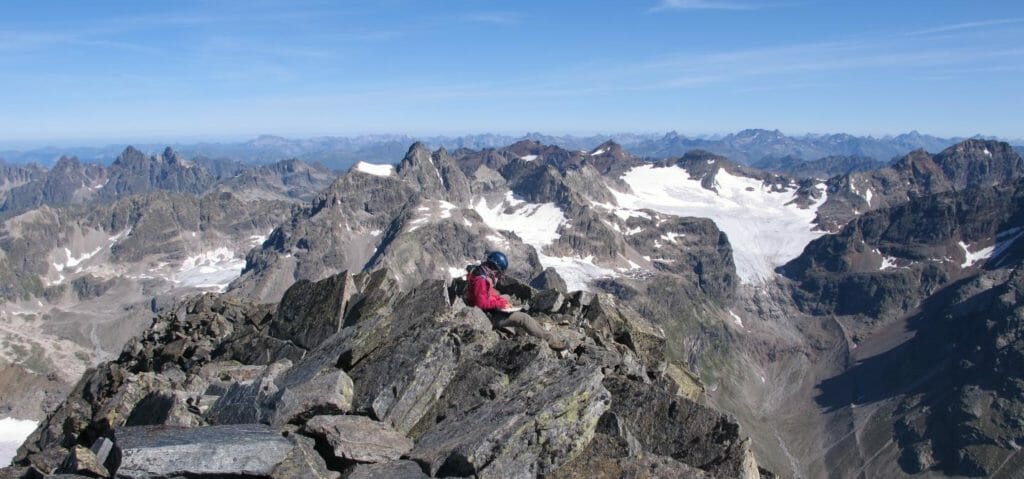Mountain Plants Head for the Peaks
According to data gathered over 145 years, the number of species on the highest European mountains has multiplied five times faster than during a comparable decade 50 years ago. High in the Alps, 16 plant species now grow where only one did in 1835. (Hansueli Rhyner, SLF, Switzerland)
High in the Alps, 16 plant species now grow where only one did in 1835. (Hansueli Rhyner, SLF, Switzerland)
Mountain plants are on the rise. The number of species on the highest European mountains has multiplied fivefold.
Data gathered over 145 years from 302 peaks shows that the count of wild plants that have colonised the highest zones has increased five times faster than during a comparable decade 50 years ago.
This may not, in the long run, be good news. The enriching of the high life is unequivocally linked to global warming: changes in precipitation, or in nutrient supplies, are not enough to account for the growth in alpine colonists.
More than 50 scientists from Denmark, Norway, Germany, France, Austria, the UK, Italy, Switzerland, Poland, Spain and Slovakia report in the journal Nature that such change has “potentially far-reaching consequences not only for biodiversity, but also for ecosystem functioning and services.”
The finding was possible because European botanists and biologists began assembling data on the plant growth at the highest sites in the 1870s and have maintained their databases ever since.
The scientists found that between 1957 and 1966, the average number of species on the 300 peaks increased by 1.1 on average. Between 2007-2016, on average 5.5 species made it to the top.
The study does not, so far, suggest that new species have displaced the original residents. But plants adapted to the conditions on the highest peaks may run out of options as the mountains themselves get warmer.
“Some of the species which have adapted to the cold and rocky conditions on mountain summits will probably disappear in the long term. They have nowhere else to go, and they can’t develop rapidly enough to be able to compete with the new arrivals, which are taller and more competitive under warmer climates,” said Manuel Steinbauer, who led the research while at the University of Aarhus in Denmark, but who is now at Friedrich-Alexander University Erlangen-Nuremberg in Germany.
“The species that move upwards often come from grassland above the tree line. But they can’t survive everywhere on the mountain top, so it’s not certain that they will be a threat to all the existing species up there. The local soil conditions and micro-climates also play a role.”
Increasingly vulnerable
Mountains are natural laboratories, and researchers have been monitoring high altitude change for decades. Conservationists and biologists have repeatedly warned that mountain ecosystems are more vulnerable to climate change.
They have measured the rate at which plants, birds and insectshave gained in altitude in the Swiss Alps and in the Andes. They have observed change in the mix of alpine flowers and even detected diminution in the body size of alpine chamois, with increasing temperature.
So change at the highest level comes as no great surprise. But as atmospheric carbon dioxide levels rise in response to ever greater use of fossil fuels, and as global average temperatures increase, species at the extremes could increasingly be at risk.
“Even though the existing species on mountain tops are not acutely endangered, the strong acceleration in the effects of global warming on plant communities on the peaks does give cause for concern, as we expect far stronger climate change toward 2100,” explained Jens-Christian Svenning at Aarhus University, another of the authors.
Your support matters…Independent journalism is under threat and overshadowed by heavily funded mainstream media.
You can help level the playing field. Become a member.
Your tax-deductible contribution keeps us digging beneath the headlines to give you thought-provoking, investigative reporting and analysis that unearths what's really happening- without compromise.
Give today to support our courageous, independent journalists.









You need to be a supporter to comment.
There are currently no responses to this article.
Be the first to respond.